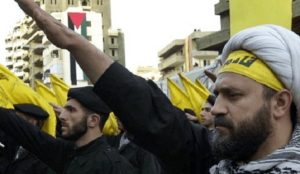In 2006, the UN passed Resolution 1701, according to which Hezbollah was supposed to be disarmed. It never happened. Now Hezbollah is stronger than ever. It essentially runs the Lebanese government; not Prime Minister Najib Mikati, but Hezbollah’s leader Hassan Nasrallah, calls the shots in Beirut. And thanks to Iran, Hezbollah has a storehouse of 150,000 missiles and rockets. Its arsenal is ten times more powerful than that possessed by Hamas.
During the four-day “pause” in its campaign in Gaza against Hamas that Israel has agreed to, the IDF could turn more of its attention to Hezbollah, stepping up its bombing campaign in southern Lebanon, to destroy weapons warehouses, enough airstrikes to inflict significant punishment, but not enough to cause Hezbollah to respond with a full-scale war, which at this point Israel would prefer to avoid. Once Hamas is destroyed, however, the Israelis may want to deal more forcefully with Hezbollah to degrade its storehouses bristling with weapons.
Since October 7, Hezbollah has fired at least 1,000 missiles into Israel’s northern cities. It has now been attacking Israel with missiles, drones, and artillery. Almost every night, there is an exchange of fire between Israel and Hezbollah. Six Israeli soldiers and three civilians have so far been killed by Hezbollah fire since October 7. More on this fighting in the north, which has escalated on November 20, can be found here: “Hezbollah says attacks Israeli troops with drones, artillery, missiles,” AFP, November 20, 2023:
The Israel-Lebanon border has seen daily exchanges of fire since the Israel-Hamas war began on October 7.
Hezbollah fighters targeted soldiers west of Kiryat Shmona in northern Israel “with three attack drones,” the Iran-backed group said in a statement, adding shortly after that it had also targeted troops in the area with artillery fire [on November 20].
Both statements claimed the attacks were “direct hits.”
Earlier Monday, Hezbollah said it had fired “Burkan missiles” at an Israeli barracks, and also claimed a number of other attacks on Israeli positions.
Israel’s army said “three UAVs (drones) were identified striking adjacent” to an army post, without specifying where. It added that “no injuries were reported.”…
Hezbollah said the three drones made “direct hits” on an army post and killed Israelis. The IDF said that the drones struck a site “adjacent” to the army post, and that there were no casualties. Which version do you believe?
In late October, after enduring three weeks of shelling by Hezbollah, the Israeli government evacuated Kiryat Shmona and forty northern Israeli border communities. On November 2, 12 rockets were fired from Lebanon and set off sirens north of the Israeli port city of Haifa. On November 6,. Israelis were forced to seek shelter in cities such as Kiryat Yam and Kiryat Bialik.
Israel has continued to evacuate more towns as Hezbollah’s attacks have increased. The moshav of Dovev was entirely emptied; its residents were moved to Tiberias. Many of them have said, “We are never going back.” The attack of October 7 has spooked them, and they know that Hezbollah’s chief, Hassan Nasrallah, has said that if Israel attacks Lebanon then his forces may move into northern Israel.
The mood of the Israelis evacuated to Tiberius from villages and moshavs closer to the Lebanese border is discussed here: “‘Never going back:’ Israelis evacuated from border town with Lebanon fear war with Hezbollah,” by and , CNN, November 20, 2023:
From the basement of a hotel in Tiberias, where dozens of evacuated children were attending a makeshift lesson, Elana Pilveny told CNN that there was “no way in hell I am going back.” Her family is not taking any chances with Hamas’ ally in southern Lebanon after October 7, when Hamas massacred 1,200 people, many of whom were civilians.
A quiet knitting circle in the hotel lobby, consisting of four cousins who have lived in Dovev for decades, belies the panic among the evacuees. “I don’t know how to function normally if I have to go back to Dovev,” Shoshana Yakut, 77, told CNN from a hotel in Tiberias where she has lived for over a month.
They have lived through the Six-Day War, the Yom Kippur War, Israel’s invasion of Lebanon in 1982 and fight with Hezbollah in 2006. “We never felt something so powerful,” she said of the October 7 attacks. “Not in 67, not in 73, or not in 82 and 2006 – this is a whole new level of fear right now.”…
The only way for the Israeli government to restore faith in its ability to protect people living near the Gazan or Lebanese borders is for the IDF to destroy Hamas, and once that has been accomplished, to concentrate its forces on the northern front, to hit Hezbollah in southern Lebanon with such ferocious airstrikes on weapons storehouses as to make Nasrallah rethink his plans. Nasrallah takes his cue from Iran, which has taken alarmed note of the two American carrier strike groups that are now in the eastern Mediterranean.

